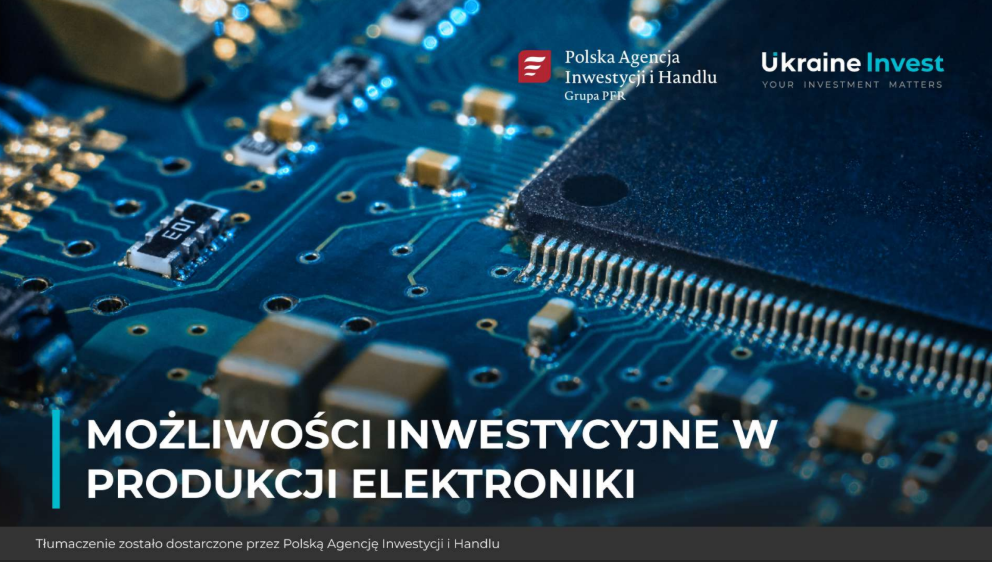Electronics manufacturing
Over the past three decades, global electronics manufacturing has heavily relied on Chinese supply chains. However, the COVID-19 pandemic and global economic challenges have significantly accelerated the geopolitical and economic bifurcation between China and the United States, inevitably reshaping global supply chains, particularly in the electronics sector.
In this evolving landscape, Ukraine has a unique opportunity to become a key Eurasian hub for technology, infrastructure, manufacturing, and agribusiness, integrating into the 21st-century global supply chain system.
The European Bank for Reconstruction and Development emphasizes the need to diversify European supply chains by establishing a “global value chain” that includes countries like Ukraine. Key advantages of Ukraine include:
– Strategic geographic location;
– 19 free trade agreements covering 46 countries, including the Deep and Comprehensive Free Trade Area (DCFTA) with the EU;
– Highly skilled workforce;
–Competitive production costs.
Impact of the war
Despite the challenges posed by the war, Ukraine’s electronics industry continues to operate, adapting to new realities. Since spring 2022, many enterprises specializing in printed circuit board (PCB) manufacturing and component supply have faced difficulties, yet the sector has demonstrated resilience.
According to YC.Market, as of late 2024, more than 5,000 companies and individual entrepreneurs in Ukraine were engaged in electronics manufacturing. Despite the crisis, the electronics production index has remained relatively stable. Demand for electronic components persists, driven by critical needs in the energy sector—heavily impacted by enemy attacks—as well as the rapid development of military technologies.
Under current conditions, Ukraine’s focus on high-tech, knowledge-intensive electronics manufacturing—especially for military and dual-use applications—is paramount. Strategic priorities include restoring and expanding the production of microchips, electronic components, and devices essential for innovation.
The widespread adoption of drone technology in Ukraine presents an opportunity for the development of a local semiconductor manufacturing industry. The country has the potential to become not only a centre for cutting-edge research and development but also a significant market for semiconductor manufacturers. This, in turn, would attract investment and enhance Ukraine’s technological capabilities.
Raw material resources
Ukraine possesses substantial reserves of raw materials essential for semiconductor production, laying the foundation for the development of this strategic industry. The country’s total reserves of silicon quartzites are estimated at 180 million tons, with certain deposits exhibiting high-quality crystalline quartz, making Ukraine competitive in the European market. The silicon dioxide (SiO₂) content in these quartzites reaches 98.8%, with estimated reserves exceeding 500 million tons.
Beyond silicon resources, Ukraine has significant deposits of germanium, primarily located in the Lviv-Volyn coal basin and eastern regions of the country. Additionally, Ukraine extracts around 5 tons of gallium arsenide annually, making it the fourth-largest producer of this material globally, with a 1.1% share in global production.
The country also holds vast graphite reserves of 18 million tons, with Ukrainian graphite recognized as among the highest quality worldwide. Given recent breakthroughs by British scientists in substituting indium with graphene in electronics manufacturing, these resources could position Ukraine for a major technological breakthrough in semiconductor development.
Global supply chains and initiatives
Ukraine’s electronics market is already integrated into international production processes. Some companies collaborate with Asian manufacturers, conducting initial production stages in Asia while completing final assembly in Ukraine.
The government is actively advancing this sector. The Ministry of Digital Transformation has identified the semiconductor industry as one of 12 priority areas for innovation policy. A strategic goal is to position Ukraine among the top 15 global leaders in microelectronics and achieve 1% of global chip production by 2030. As part of this vision, in 2024, the Chips Act UA was introduced, along with plans to build Ukraine’s first chip-manufacturing facility. The plant is expected to reach a production capacity of 50,000 microchips per month within three years of launch.
These factors create a strong foundation for Ukraine’s transformation into a leading electronics manufacturing hub, serving both domestic and international markets. With its initiatives and natural resources, Ukraine has the potential to strengthen its position in global technology supply chains and emerge as a key player in the microelectronics and semiconductor industries.










